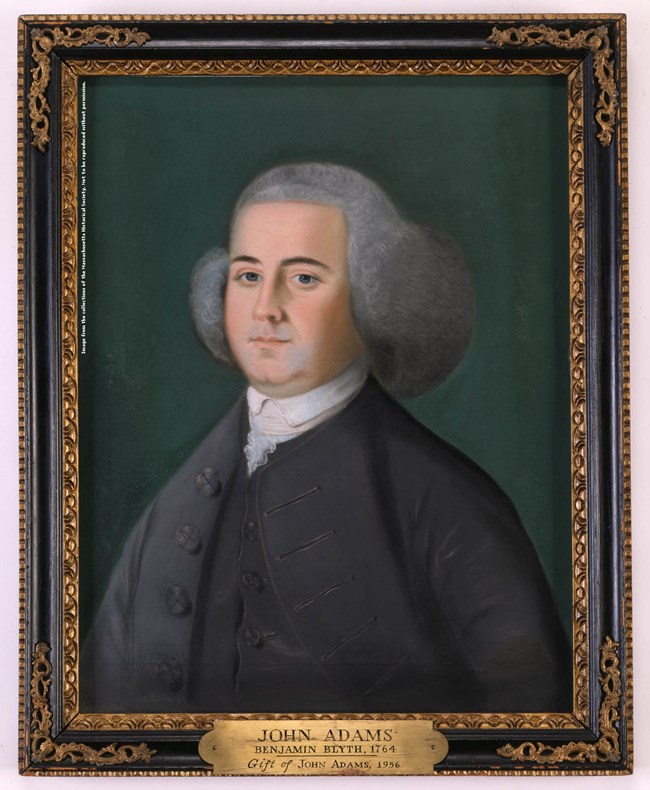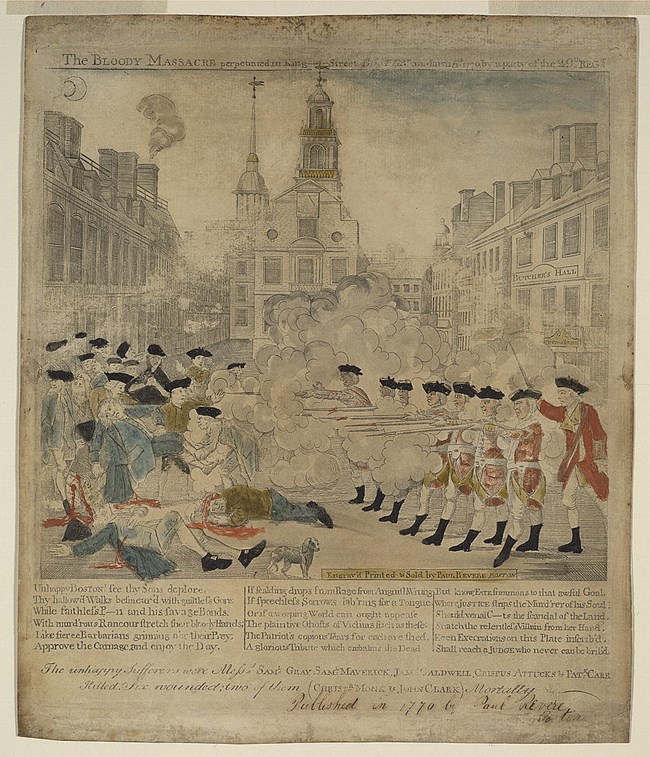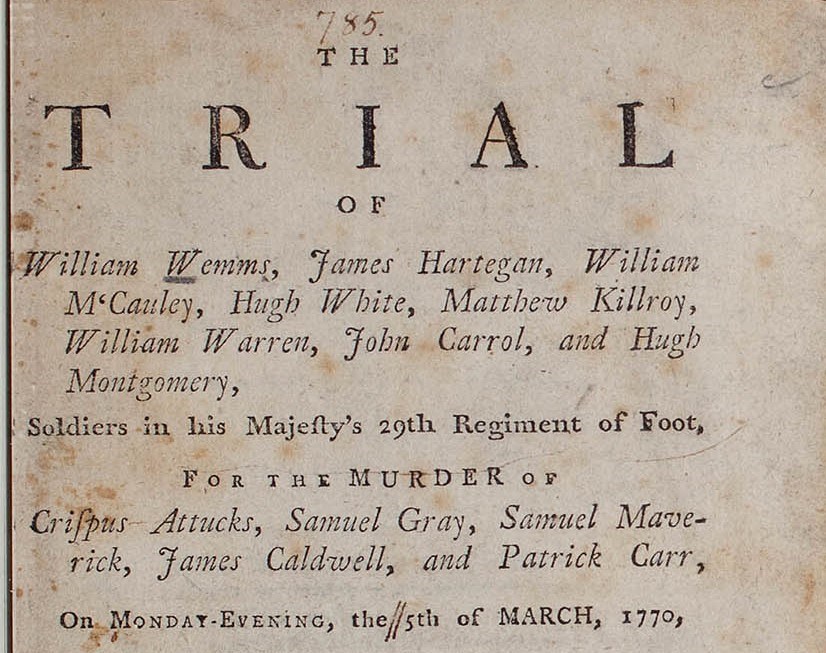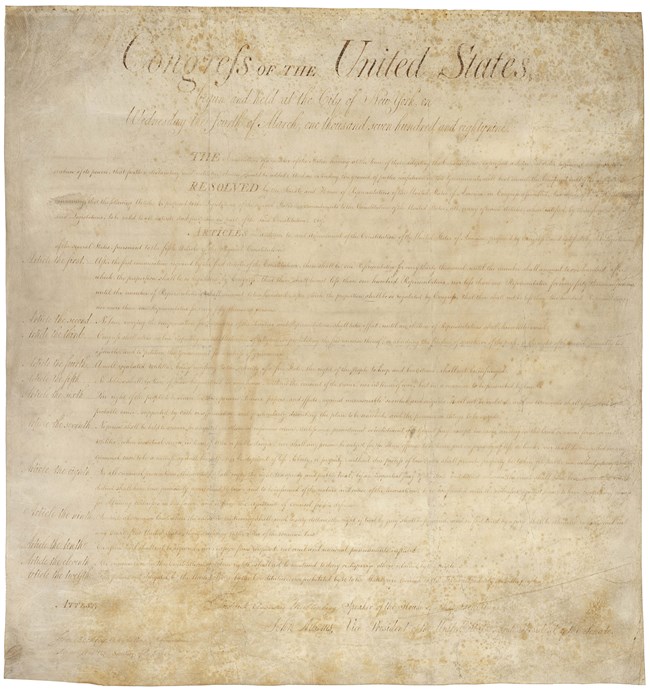Last updated: July 25, 2024
Article
Boston Massacre Trial
I had no hesitation in answering that Council ought to be the very last thing that [an] accused Person should want in a free Country.[1]
On March 5, 1770, British soldiers fired into a crowd of civilians, killing five people. Crispus Attucks, Samuel Gray, and James Caldwell died that night. Seventeen-year-old Samuel Maverick died the next morning. Patrick Carr died from his wounds nearly two weeks later. This event sparked outrage in Bostonians who later called this "the Boston Massacre."
Shortly after the Massacre, the soldiers (William Wemms, Hugh White, Hugh Montgomery, James Hartigan, William McCauley, Mathew Kilroy, William Warren, and John Carroll) and their captain (Thomas Preston) were arrested and jailed. Royal government officials decided to delay the trial to let tensions in the town cool. Both sides doubted the soldiers would be given a fair trial. Loyalists feared that colonists would want vengeance; colonists feared that loyalists would arrange for charges to be dismissed.[2]
The Defense Prepares
The day after the Massacre, James Forrest, a loyalist merchant, approached lawyer John Adams on behalf of Captain Thomas Preston, who was to be tried separately from his soldiers. Forrest told Adams that Preston "wishe[d] for council, and [could] get none."[3] Lawyers throughout Boston had refused to represent Preston or his soldiers. Robert Auchmuty and Josiah Quincy both considered taking the case; however, they told Forrest they would only serve if Adams agreed to join the defense.[4]

John Adams, portrait, pastel on paper by Benjamin Blyth, circa 1766. Massachusetts Historical Society.
In his autobiography, Adams recalled his reply to Forrest's plea, saying:
I had no hesitation in answering that Council ought to be the very last thing that an accused Person should want in a free Country … And that Persons whose Lives were at Stake ought to have the Council they preferred … and that every Lawyer must hold himself responsible not only to his Country, but to the highest and most infallible of all Trybunals for the Part he should Act.[5]
John Adams firmly believed that everyone had the right to a lawyer and a fair trial, so he willingly agreed to represent the soldiers even if it meant risking his reputation.[6]
The Court scheduled Preston's trial first as it would influence the court case against the soldiers. If the jury found Preston guilty of ordering his soldiers to fire into the crowd, then the soldiers under his command would have only been following orders. If, however, the jury found that Captain Preston had not given the order to fire, the soldiers would be charged with murder and put on trial themselves.
The Trial of Captain Preston
Robert Auchmuty, John Adams, and Josiah Quincy led the defense of Captain Preston. Robert Treat Paine and Samuel Quincy served as the prosecution. Lacking physical evidence, both the prosecution and defense had to rely almost entirely on eye-witness testimony.[7]
Captain Preston's trial began on October 24, 1770. Lasting six days, this trial became the first in the American colonies with a duration longer than a single day. The prosecution argued that while Preston had not fired a single shot himself, if he had given the order to fire, Preston would have to take responsibility for the five civilian deaths. The defense argued that there was not sufficient evidence to prove that Preston had given the fatal order.

“The Bloody Massacre perpetuated in King Stret Boston on March 5th 1770 by a Party of the 29th Reg.” Engraved by Paul Revere. Library of Congress, Prints and Photographs Division.
As witnesses gave their testimonies, contradictions emerged. Some witnesses even disagreed over what Preston had been wearing. The contrary evidence made these witnesses seem less credible, which helped to sow seeds of doubt in the jury. The testimonies that ultimately saved Preston were from multiple witnesses who swore that they had seen the captain standing in front of the soldiers when they began to fire.
One of these witnesses was a free Black man, Newton Prince. Prince testified that he saw Captain Preston standing in front of the soldiers and "heard no orders given to fire."[8] If Preston had indeed given the order, he surely would have been wise enough to stand behind his soldiers.
On October 30, 1770, the jury delivered its verdict: Captain Thomas Preston was found not guilty.[9]
The Trial of the Soldiers
On November 27, nearly a month after Preston's acquittal, the court moved forward with its trial of the soldiers. Since the prosecution had been unable to prove that Captain Preston had given the order to fire, the question remained: did the soldiers open fire of their own accord? John Adams and Josiah Quincy stayed on the case, while Sampson Salter Blowers replaced Robert Auchmuty. For the trial of the soldiers, John Adams agreed to serve as the lead defense lawyer. The prosecution team, Robert Treat Paine and Samuel Quincy, remained the same.
From the beginning of the trial, neither side contested that one or more of the soldiers had discharged their weapons on that fateful night. To argue its case, the prosecution simply needed to prove two points: that the soldiers had been present the night of the incident, and that they had fired their muskets. The defense had a larger task ahead of it. The lawyers needed to argue that the soldiers fired in self-defense, which would justify their actions.[10]

"The Trial of William Wemms, James Hartegan, William McCauley, …" The Annotated Newspapers of Harbottle Dorr. Massachusetts Historical Society.
During the trial, the lawyers called more than forty witnesses to testify in court. One of the most interesting testimonies presented for the defense was that of Patrick Carr, one of the victims who had died nine days after the Massacre. John Jeffries, Carr's surgeon, testified on his patient's behalf, relaying Carr's dying declaration to the court.[11] Jeffries told the court that
[Carr] told me...he was a native of Ireland, that he had frequently seen mobs, and soldiers called upon to quell them...he had seen soldiers often fire on the people in Ireland, but had never seen them bear half so much before they fired in his life...[12]
Seemingly, Carr did not blame the soldiers for defending themselves. This testimony proved invaluable.[13]
In their closing arguments, both the prosecution and defense acknowledged that, without a doubt, the soldiers fired their weapons. However, they debated whether the use of deadly force had been justified. In his closing statement for the prosecution, Samuel Quincy argued that the soldiers could have fled the scene if they feared for their lives. Instead, the soldiers chose to use deadly force. Quincy said, "A person cannot justify killing, if he can by any means make his escape."[14] Therefore, the soldiers should be convicted of murder.
John Adams closed for the defense. He reminded the jury that their decision had to be based on the facts rather than their passions:
I will enlarge no more on the evidence, but submit it to you.—Facts are stubborn things; and whatever may be our wishes, our inclinations, or the dictates of our passions, they cannot alter the state of facts and evidence: nor is the law less stable than the fact; if an assault was made to endanger their lives, the law is clear, they had a right to kill in their own defence; if it was not so severe as to endanger their lives, yet if they were assaulted at all, struck and abused by blows of any sort, by snow-balls, oyster-shells, cinders, clubs, or sticks of any kind; this was a provocation, for which the law reduces the offence of killing, down to manslaughter, in consideration of those passions in our nature, which cannot be eradicated. To your candour and justice I submit the prisoners and their cause.[15]
After a nine-day long trial, the decision rested with the jury. They deliberated for two and a half hours before returning with their verdict. The jury outright acquitted six of the eight soldiers present the night of March 5, 1770. For the remaining two soldiers, Hugh Montgomery and Matthew Kilroy, the jury found them guilty of manslaughter. By invoking the Benefit of Clergy, an antiquated piece of English law that reduced sentences for first time offenders and could only be used by literate citizens, the defense successfully commuted their sentences from capital punishment to having their right thumbs branded.[16]
Aftermath
Years later, in 1786, John Adams remarked that the Boston Massacre laid the foundation for American Independence. However, the trials held after the Massacre arguably proved to be just as influential.
In the short term, the Boston Massacre trials in 1770 demonstrated to Great Britain that the American colonies could hold fair and just trials and justice could be served locally and administrated by one's peers. Despite this proof, in 1774, British Parliament passed the Administration of Justice Act, which prohibited the American colonies from conducting or deliberating in their own trials. Parliament passed this act as retribution for the Boston Tea Party, and it fomented further colonial mistrust of British leadership, escalating the already rising tensions that led to the American Revolution.[17]

National Archives. Click on the photo to see a transcript of the Bill of Rights.
Beyond the War for Independence, these trials have left a lasting legacy. The United States Constitution reflects John Adams' firm belief that every individual deserves the right to a fair trial. The Sixth Amendment of the Constitution states:
In all criminal prosecutions, the accused shall enjoy the right to a speedy and public trial, by an impartial jury of the State and district wherein the crime shall have been committed, which district shall have been previously ascertained by law, and to be informed of the nature and cause of the accusation; to be confronted with the witnesses against him; to have compulsory process for obtaining witnesses in his favor, and to have the Assistance of Counsel for his defence.[18]
This right has shaped and continues to shape the nation's legal system.
John Adams notes during the Boston Massacre trial shine a light on how he viewed his duty as a lawyer, a view that likely has influenced subsequent generations' pursuits of truth and justice:
It has become my duty, it shall therefore be my endeavor, to acquit myself in the course of this trial with decency and candour; reflecting that however interesting the question may be, the object of our enquiry is simply that of truth, and that this enquiry is to be conducted by the wisdom of the laws and constitution. [19]
Footnotes
[1] "[1770]," Founders Online, National Archives. Original source: The Adams Papers, Diary and Autobiography of John Adams, vol. 3, Diary, 1782–1804; Autobiography, Part One to October 1776, ed. L. H. Butterfield (Cambridge, MA: Harvard University Press, 1961), pp. 291–296.
[2] Hiller B. Zobel, The Boston Massacre (New York: W.W. Norton, 1996), 221-222.
[3] "[1770]," Founders Online, National Archives.
[4] "[1770]," Founders Online, National Archives.
[5] "[1770]," Founders Online, National Archives.
[6] "[1770]," Founders Online, National Archives; Edith Belle Gelles, Abigail and John: Portrait Of A Marriage (New York: William Morrow, 2009), 32.
[7] Zobel, The Boston Massacre, 241.
[8] Zobel, 258
[9] Zobel, 258, 265.
[10] Zobel 242, 271.
[11] This was the first recorded instance of a dying declaration being an exception to excluding hearsay.
[12] Zobel, 285-286.
[13] Zobel, 285-286.
[14] "Samuel Quincy's Argument for the Crown: 29 November 1770," Founders Online, National Archives. Original source: The Adams Papers, Legal Papers of John Adams, vol. 3, Cases 63 and 64: The Boston Massacre Trials, ed. L. Kinvin Wroth and Hiller B. Zobel (Cambridge, MA: Harvard University Press, 1965), pp. 144–157.
[15] "Adams' Argument for the Defense: 3–4 December 1770," Founders Online, National Archives. Original source: The Adams Papers, Legal Papers of John Adams, vol. 3, Cases 63 and 64: The Boston Massacre Trials, ed. L. Kinvin Wroth and Hiller B. Zobel (Cambridge, MA: Harvard University Press, 1965), pp. 242–270.
[16] Zobel, 298.
[17] "To Matthew Robinson-Morris," Papers of John Adams, volume 18, Adams Papers Digital Edition, Massachusetts Historical Society, accessed July, 2024.
[18] "Constitution of the United State Sixth Amendment," Constitution Annotated, Congress.gov, accessed July, 2024.
[19] "To Matthew Robinson-Morris," Papers of John Adams, volume 18, Adams Papers Digital Edition.
